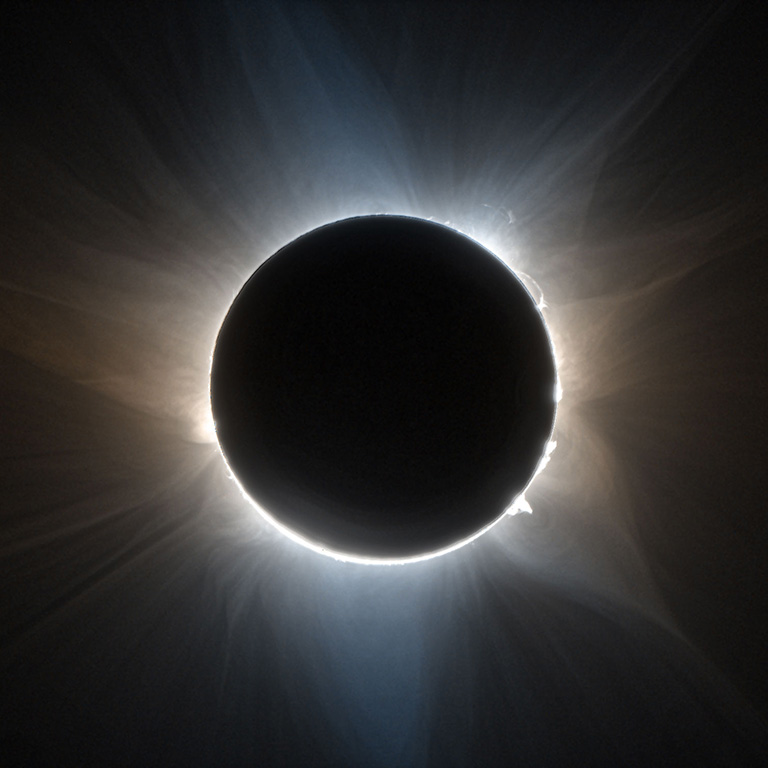BLOOMINGTON, Ind. – A total eclipse of the sun will be visible April 8 along a narrow path spanning North America from southwest to northeast. Most people across the United States will see a partial eclipse, but millions of observers will travel to see the spectacle of the sun's corona surrounding the black disk of the moon. Extensive information about events surrounding the eclipse can be found in the April 2024 issue of Astronomy magazine.
Planets
Jupiter will stand about 20 degrees above the western horizon 45 minutes after sunset in early April, but this altitude will drop to 2 degrees at the same time by the end of the month. Look for Jupiter in the first week of the month.
Mars and Saturn will have a fine appearance April 10, drawing close together a few degrees above the eastern horizon 45 minutes before sunrise. Saturn will dominate the scene.
Mercury will have a brief showing low in the western sky in the first few days of April.
Venus is approaching a June conjunction with the sun, so this planet will be difficult to spot.
Meteor shower
The Lyrid meteor shower will peak before dawn on April 22, but it will be strongly affected by a nearly full moon. Only a handful of bright meteors will be visible in the moonlit sky. The moon will be visible all night, and half a dozen meteors per hour may be visible. The meteors can appear anywhere in the sky, but they will seem to come from a point called the radiant in the constellation Lyra, which gives the shower its name. Lyra's bright white star Vega will be almost at the radiant, and the meteor count should be highest when Vega is overhead.
Moon phases
The moon will be at last quarter on April 1, new on April 8 (with a total solar eclipse), at first quarter on April 15, and full on April 23.




 The College of Arts
The College of Arts